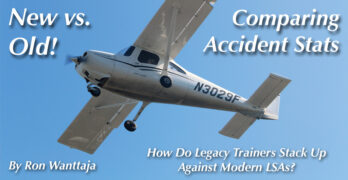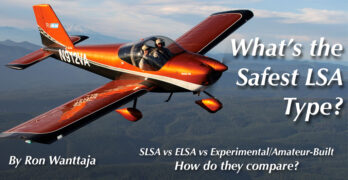Editor’s Note: This is the second part of Ron Wanttaja’s survey of LSA safety (here’s the first). This time, he takes a close look at how modern LSAs compare with legacy trainers as epitomized by Cessna’s 152, both in terms of accident rates and the kinds of mayhem they succumb to. Let’s dive in!
In the previous safety review, we looked various forms of LSA—SLSA, ELSA and Experimental/Amateur-Built. For this article, we’ll look only at SLSA airplanes. We’re not addressing powered parachutes, weight shift or other SLSA classes—just traditional flying machines with wings and a motor. Call them “SLSA-A,” or “SLSA-As” for plural. We’ll address their accidents from 2005 through 2021.
To identify the SLSA-A accidents, I cross-referenced the NTSB accident database with FAA registrations, including both active and inactive aircraft.
What to compare them to? Let’s pick the near-ubiquitous Cessna 152. It’s close to the general definition of Light Sport, other than exceeding the LSA gross weight requirement.
Light Sport Accidents — How Do The Categories Compare?
Editor’s Note: This two-part short series is the handiwork of Ron Wanttaja, who has been tracking accident and registration data for Experimental aircraft for decades. Here, he looks at both the fleet size and accident rates among the various LSA categories. Looking ahead, the next installment will dig deep into how LSAs fare against more common certified trainers.
It’s been almost 20 years since the FAA implemented the Light Sport Aircraft category. While the planes might appear similar to traditional Experimental/Amateur-Built (E/A-B) aircraft, there are significant differences in how they are designed, constructed, maintained and operated.
Light Sports have had a major impact on flying in the U.S., even if their numbers are still relatively few. Without Light Sport (and the accompanying Sport Pilot program), the FAA would have lacked data to justify the simplification of pilot medicals known as BasicMed. Light Sport’s proven safety led to the MOSAIC program, featuring a major relaxation of the limits of what can be flown without an FAA medical.



